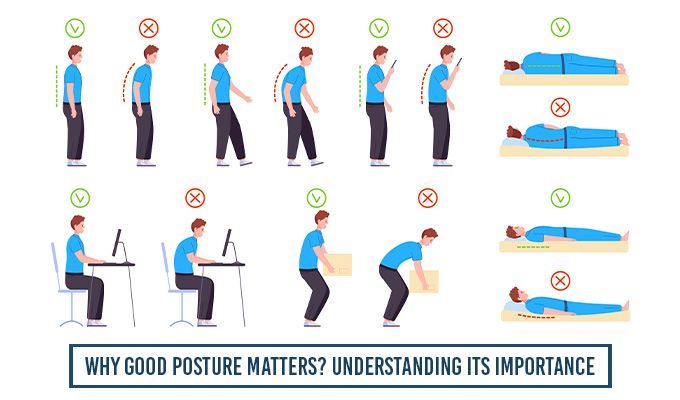Posture is the position of your body, which includes static (sitting, standing) and dynamic (moving) stances, and is crucial for preventing muscle strain and joint damage.
Poor posture, often a result of muscle weakness, bad habits, or prolonged static positions, can lead to back pain, spinal dysfunction, and other health issues. You can improve posture by strengthening core muscles, performing daily stretches and exercises, making ergonomic adjustments to your workspace and sleep environment, and incorporating more movement into your day.
What Is Posture?
Posture is the way we hold our bodies while sitting, standing, and moving. Good posture means the spine is in neutral alignment, supported by balanced muscles and joints. Poor posture develops when the body falls out of alignment, placing extra strain on muscles, ligaments, and joints.
What Causes Poor Posture?
- Sedentary lifestyle – prolonged sitting, screen time, or driving.
- Weak muscles – especially the core, glutes, and postural muscles.
- Muscle imbalances – for example, tight chest muscles with weak upper back.
- Injury or pain – protective positions that become habitual.
- Poor ergonomics – unsupportive chairs, low desks, or bad workstation set-up.
- Habits – slouching on the sofa, crossing legs, carrying a bag on one shoulder.
- Stress and fatigue – physical and emotional stress often causes slumping or tension.
Common Posture Types
1. Kyphotic Posture (Rounded Upper Back)
- Appearance: Rounded shoulders, hunched upper back, forward head.
- Causes: Sitting, “tech neck,” tight chest, weak upper back.
- Issues: Neck/shoulder pain, headaches, reduced breathing efficiency.
2. Lordotic Posture (Excessive Lower Back Curve)
- Appearance: Over-arched lower back, pelvis tilted forwards, stomach/bottom pushed out.
- Causes: Weak core, tight hip flexors, pregnancy, prolonged standing.
- Issues: Low back pain, hip discomfort, hamstring tightness.
3. Flat Back Posture
- Appearance: Straight lower spine, pelvis tucked under.
- Causes: Weak hip flexors, tight hamstrings, prolonged sitting.
- Issues: Stiffness, fatigue, poor shock absorption.
4. Sway Back Posture
- Appearance: Hips pushed forward, chest leans back, pelvis tucked under.
- Causes: Weak glutes/core, habitual slouching.
- Issues: Back/hip pain, poor balance.
5. Forward Head Posture
- Appearance: Head juts forward beyond the shoulders (“text neck”).
- Causes: Screens, phones, poor driving posture.
- Issues: Neck/upper back pain, headaches, jaw tension.
Can You Be a Mix of Posture Types?
Yes. Most people don’t fit neatly into one category.
- Example: Someone may have a kyphotic upper back and a lordotic lower back (kypho-lordotic posture).
- Forward head posture often appears with rounded shoulders.
- Posture also changes throughout the day depending on sitting, standing, or moving habits.
How Poor Posture Shows Up
- Rounded shoulders or uneven hips.
- Neck, back, or shoulder pain.
- Stiffness or restricted mobility.
- Headaches and fatigue.
- Loss of confidence in appearance and movement.
Improving Posture
Awareness
- Regularly check how you’re standing and sitting.
- Set reminders to move and adjust position.
Ergonomics
- Set screens at eye level, feet flat on the floor.
- Supportive chair or lumbar cushion.
- Carry bags evenly or use backpacks.
Lifestyle
- Take movement breaks every 30–45 minutes.
- Avoid long periods in one static position.
Exercise
- Stretch tight muscles: chest, hip flexors, hamstrings.
- Strengthen weak muscles: core, glutes, upper back.
- Mobilise the spine: cat-cow, thoracic rotations.
- Mind-body training: Pilates, yoga, breathwork.
Example Exercises to Improve Posture
- Wall Angels – strengthen upper back, open chest.
- Glute Bridges – activate glutes, stabilise pelvis.
- Cat-Cow Stretch – mobilise spine.
- Plank – strengthen core.
- Chest Openers – release tight pectorals.
- Band Rows – strengthen mid/upper back.
How Can Fitness Pilates Help Posture?
Fitness Pilates is one of the most effective methods for improving posture because it combines strength, mobility, flexibility, and awareness in every session.
- Core strength: A strong core supports the spine and helps prevent excessive arching or slumping.
- Spinal mobility: Controlled spinal movements increase flexibility and help restore natural curves.
- Muscle balance: Pilates strengthens weak postural muscles (upper back, glutes, core) and stretches tight ones (chest, hip flexors).
- Alignment awareness: Exercises are performed with focus on neutral spine and correct positioning, building long-term habits.
- Breathing techniques: Pilates breathwork reduces tension in the shoulders and upper chest, helping to relax and reset posture.
- Adaptability: Exercises can be modified to suit all ages and abilities, making it ideal for older adults or those recovering from injury.
Over time, consistent Fitness Pilates practice helps the body “relearn” how to stand, sit, and move efficiently, reducing strain and promoting confidence in everyday movement.
Poor posture is common but not permanent. With awareness, lifestyle changes, and consistent movement—especially Fitness Pilates—you can retrain your body into a more balanced, efficient position. This reduces pain, improves function, and helps you move with more ease and confidence at every age.


